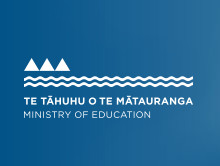Te Haerenga, te Tūhonotanga (wh. 20–21)
He whakarāpopototanga
I konei, ka kite tātou i te haerenga o Tūhuruhuru ki te rapu i tōna whaea. Ka whakamahi ia i ngā pungarehu hei whakaparuparu i a ia kia kore ai tōna whaea rātou ko āna pononga e mōhio ko wai a ia. Ka riro tūnga ia hei kaikawe wahie, kaikawe wai hoki ki tōna matua kēkē, ki a Rupe. Nāwai, nāwai, ka hangarau ia ki a Rupe, ā, tae atu ana ki mua i tōna whaea. Ka waiata ia i tāna waiata, kātahi ka mōhio a Hineteiwaiwa ko Tūhuruhuru te tamaiti tūmau nei.
Summary
Here Tūhuruhuru sets out to find his mother. He covers himself in ash so he is not recognised by his mother or her servants. He becomes a slave who carries wood and water to his uncle, Rupe. As time goes by, he tricks Rupe and is able to make his way to entertain to his mother. He sings his song and, in that moment, Hineteiwaiwa realises that this young slave before her is her son, Tūhuruhuru.
| Te momo reo tuhi Language style |
|
|---|---|
| Ētahi āhuatanga o tēnei momo reo tuhi Features of this language style |
|



